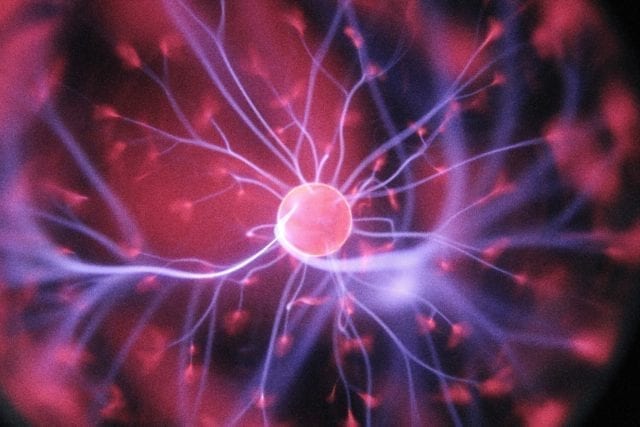
Consciousness: Find out about a variety of mental states
Consciousness is a highly contested subject within a variety of different fields, so it’s no surprise that there are multiple accepted definitions. Some consider consciousness as one simply being awake and aware of their surroundings, while others consider it an individualized awareness of one’s own, unique mind. Depending on the context it’s being used in, it can range from being limited to internal volition and introspection, to including all types of experiences and perceptions. It’s also hard to separate consciousness into respective types or forms, because consciousness is used in describing such a large variety of mental states, and the interdisciplinary debate has yet to reach any conclusion.

In psychology, Sigmund Freud is regarded highly in academia for his base theory of divided human consciousness, where it separates into three levels of awareness: the conscious, the preconscious, and the unconscious.
- The conscious level consists of what we are aware of, our internal understanding of ourselves and our external understanding of our surroundings.
- The preconscious consists of things that are below of threshold of immediate conscious awareness but are able to focus in on at our own will.
- The unconscious consists of things that are outside of all conscious awareness and are unable to be achieved. The unconscious is typically concerned with memories, thoughts, and urges that we repress, but still influence our behavior outside of our own understanding. The preconscious is considered unconscious when it is not being recalled, but it differs with the unconscious because it can be easily retrieved and understood.
Altered States of Consciousness
Now more than ever, mindfulness practices are becoming staples in peoples’ wellness routines. Mindfulness as a concept is rooted in Buddhist meditative practices and includes maintaining full awareness of one’s thoughts and feelings with full acceptance. The goal is to be fully immersed in the present moment and separated from thoughts related to the past or the future. In addition to its use in meditation, mindfulness is often used therapeutically, in order to confront latent emotions without judging oneself for them. Mindfulness is often achieved through practice in relaxed environments, breathing techniques, and sensory exercises.
Metacognition, also known as “cognition about cognition”, “thinking about thinking”, or “awareness of one’s awareness” is known as a higher-order cognitive function. Metacognitive behaviors are used most commonly by those in school and higher academia as a tool to revise and understand their own learning behaviors. It is divided into two types: metacognitive knowledge and metacognitive regulation. Metacognitive knowledge includes what learners know about their own preferred styles of learning, methods available for said learning, and the subjective ability to determine how best to approach a task. Metacognitive regulation involves planning, monitoring, evaluating, and reflecting upon a certain task. Those utilizing metacognitive regulation are able to recognize the task at hand, how it should be deliberately approached, and whether or not changes need to be made to optimize learning efficiency.
Many people report achieving spiritual awakenings or enlightenment, whether by religious practices, such as meditation and/or prayer, drug use, such as high doses of a psychoactive substance, or peak life experiences, such as a close brush with death or a thrilling rock climb. This is typically described as opening up one’s conscious awareness beyond the confines of their subjective reality, or their ego, and becoming aware of a higher sense of self. Humans are always driven by some sort of egoistic desire, whether it be hunger, thirst, success, self-confidence, etc… The mark of this higher state of being is that one is no longer driven by these basic human instincts but are instead able to simply exist.
Freud, in conjunction with his consciousness studies, posits that the human psyche is divided into three essential components: the id, the ego, and the superego. The id is primitive and instinctive and includes biological aspects, like libido and the need to eat, and is selfish and irrational in fulfilling their needs. Babies are said to be born with only their id, and the ego and superego are said to develop later on. The ego is developed to mediate the irrational requests of the id and reality.
The ego is rational, working out the objectively reasonable and unselfish way, willing to compromise to avoid societal consequences; however, is still concerned with pleasure-seeking. The superego incorporates values learned directly from one’s parents of society. Instead of simply realistic, the superego strives to become moralistic in goal setting. The superego exists between two stages: conscience and ideal self. The conscience encourages us, through guilt and other methods, to achieve our ideal self, or the version of self that meets our ultimate goal. When the ego dissipates, there is no concern outside of being, and letting the rest work itself out.

Deep and dreamless sleep is considered an unconscious state, but the dream world opens an entirely new conscious reality, separate from any kind of wakeful consciousness. For the most part, we cannot control our dreams, but we are not entirely passive within them; we are most often the main actors. The idea of dreams contributes new evidence to resolve the mind-body problem since the brain initiates consciousness in the absence of any other external stimuli. Scientists are still looking to fully answer the question of how and why the brain creates dreams, aside from its strong association with REM sleep and contributions from the audiovisual region within the junction between the parietal and occipital lobe.
We do know that there a variety of different dream states, however. Lucid dreaming, for example, is where one can control their dreams and have a conscious awareness that they are, in fact, in a dream. Essentially, the mind is awake when the body is asleep while in REM sleep, and while it can be accidental, it is oftentimes purposefully induced to meditate or practice mindfulness. An extension of this is a phenomenon called astral projection, an esoteric, intentional out-of-body experiences wherein users claim their consciousness is separated from their physical body and capable of traveling on its own. However, there are minimal scientific studies that prove the existence of astral projection as an objective experience, out of body, consciousness separating experiences are known to be induced by dissociative and psychoactive drugs, deliberate spiritual practice and suspension of belief, sensory deprivation, and more.
Disordered States of Consciousness
Following severe brain injuries, such as those following a vegetative state or coma, it is common for people in healing to have a slow recovery of consciousness, and this period is known as being in a minimally conscious state. They are inconsistent in their abilities to be self-aware and aware of the world around them. It is common for these people to falter when trying to follow simple instructions, can only sometimes speak in a manner that is understandable, and change in their ability to focus on a specific thing for a sustained period of time. Since these actions are so inconsistent, it can be hard to distinguish a minimally conscious person from a vegetative person.
The main difference is that the vegetative person has no level of conscious awareness, while the minimally conscious person can fluctuate between not having conscious awareness and having some level. Further along in the recovery process than a minimally conscious person, is a person in a confusional state. They are much more adept in paying attention, recalling memories, and following instructions. However, it is common for them to regularly become disoriented, hallucinate or become delusional, and experience severely impaired responsiveness and cognition. From this state, it is extremely likely that the person will make a full recovery and one day achieve normal levels of consciousness.
Dissociative disorders are the involuntary disconnection between one’s identity, memory, and consciousness. There are multiple different types of dissociative disorders, most commonly considered as dissociative identity disorder (DID), depersonalization and derealization, and dissociative amnesia and/or dissociative fugue. DID is characterized by a person that has a lack of connection between their consciousness and true identity, which often results as the person appearing as though they take on different personalities. It is most likely caused by severe, repetitive physical, sexual, or emotional trauma in early childhood. In rare cases, certain dissociated states can be concurrently conscious and understand themselves as distinct identity. Some philosophers theorize that evidence of operationally different, yet concurrent consciousness experiences in the brain, suggests a universal consciousness that gives rise to these dissociated personalities. However, it is most common for the alternate states to exist entirely separated from the primary consciousness that exists in accord with the body.
Depersonalization disorder is characterized by periods of feeling disconnected from or foreign to one’s body or thoughts. It is frequently described as feeling like you are an outside observer to your own body, and the distorted consciousness state is often referred to as being dreamlike. Derealization is a feeling that one’s perception of reality is false, and a fear that their external reality is fabricated by their own mind. Derealization is similar to depersonalization in that there is a detached consciousness, but in derealization, the idea is that one’s bodily-influenced consciousness is deceiving them, and depersonalization is more thought of like the disconnect of one’s body and mind. Both depersonalization and derealization are often brought on by heavy substance abuse, more severe personality disorders, seizure disorders, and trauma.
Dissociative amnesia results in an inability to recall important information. It is different from basic memory loss, since it includes gaps in memory for extended periods of time and often erase memories associated with the traumatic event, and it is not typical amnesia, since it does not result from any physical brain injury or disease, but rather, the result of a deeply repressed traumatic event. Dissociative fugue is extreme dissociative amnesia, where a person completely loses their sense of identity and all past memories. These people may wander aimlessly away from their homes, or even take on a new identity, with no recollection of their previous one. This, like many other dissociative disorders, is linked to severe stress and/or prolonged trauma.
Theories & Research
The Ancient Mayans are credited as being some of the first groups to formulate some form of hierarchical consciousness structure. Understanding consciousness incorporates both internal and external stimuli, they regarded it as the most basic form of existence. In the 17th century, John Locke was one of the first philosophers to begin to ponder the mystifying world of consciousness. He was the first to say that our identity is tied to our consciousness, but it is not tied to our physical bodies and can sustain once the physical body dies. Rene Descartes, another 17th-century philosopher, hypothesized Cartesian dualism, or the idea that the mind and body exist in different domains.
Modern-day psychologists have evolved a lot, but not without expounding upon, as well as criticizing these past theories. Development psychologists see consciousness as exactly that: a developmental process with the potential for reaching higher levels. Social psychologists view consciousness as a product cultural influence, and not something that is necessarily intrinsic to an individual.

Neuropsychologists see consciousness as being highly ingrained in our neural pathways and structures. They believe there is a correlation to be found through subjective experiences as reported by an individual, and brain activity. There is not a definitive neural correlates for consciousness states, but rather, it is possible that all subjective and perpetually changing states of consciousness have specific neural correlates. While this may seem impossible to derive useful data from, neuropsychologists believe that inducing activity in particular regions and/or networks will allow them to find common causes among these different correlates. Neurobiology takes a different approach, evaluating the body in greater detail than the mind, considering neural results of consciousness as the cause of certain bodily responses, where consciousness is regarded as a state-dependent portion of a different biological system.
Brain imaging has also been a recent tool in consciousness studies. Researchers believe that different patterns in brain waves, recorded by an electroencephalograph (EEG) could indicate the production of different states of consciousness. Functional magnetic resonance imaging (fMRI scans) are also commonly used to measure physical activity in the brain, and how this activity may correlate with various consciousness states.
Additionally, there are multiple areas of the brain implicated in consciousness, the prefrontal cortex and temporal lobe being the primary candidates for more in-depth study. The prefrontal cortex is considered pertinent in triggering visual awareness throughout other areas of the brain, and the temporal lobe is essential in auditory processing, object and facial recognition, and the ability to utilize language. Damage to the prefrontal cortex can lessen one’s capacity of compassion, guilt, and other social emotions, which is a massive component of consciousness. Damage to the temporal lobe can result is a disturbance in auditory, visual, and language perception, comprehension, and output, as well as a disturbance in selective attention abilities.












